SIKKIMNEWAGUTHI
Search This Blog
Tuesday, September 25, 2012
KC PRADHAN
A JEWEL IN THE CROWN OF
NEWAR COMMUNITY


Shri KC Pradhan, who has also served Sikkim as its Chief Secretary, and a respected plants man, is the first Indian and only the third
Asian to receive the prestigious Veitch Memorial Medal of the Royal
Horticulture Society, United
Kingdom
The Royal Horticultural Society conferred this prestigious award to Shri Pradhan for the year 2011. The awards ceremony was held on July 04 2011, at the Hampton Court Palace- Premiere Flower Show- the largest flower show in the world. Shri K.C.Pradhan however did not travel to England due to ill health, and the award, which was presented by Princess Alexandra, was received on his behalf by of the the Royal Horticultural Society. BBC had covered the awards ceremony live, on its BBC 2 channel.
The Veitch Memorial Medal (VMM) was instituted in the year 1870 in the memory of James Veitch of
In a more detailed introduction to Shri K.C.
Pradhan, the Royal Horticulture Society states: “Keshab Pradhan saw eco-tourism
as an engine of economic growth in Sikkim ,
India Sikkim
In
2003 the American Rhododendron Society (ARS) conferred upon Shri KC Pradhan the
“Gold Medal Award” and in 2005 with the “Pioneer Achievement Award”. Along with
this he was also presented a citation which read:” As Sikkim ’s Chief Forester, your early recognition
that the unique forest and mountain resources in Sikkim
Shri KC Pradhan’s finest hours were, as per the book “The Life and Times of a Plantsman in the SIKKIM HIMALAYAS” authored by Shri Pradhan, was when an eminent Japanese botanist Professor Hiroshi Hara, had given the name Impatiens pradhanii to a new plant found by Shri Pradhan, and when The Chief Minister Pawan Chamling presented to Mrs Sonia Gandhi, a new orchid hybrid developed by Shri KC Pradhan and named it Brassolaeliocattleya Miraya, after her granddaughter, Miraya Vadra Gandhi
Shri Keshab Chandra Pradhan, lovingly addressed as KC Pradhan,
was born in 1935 at Pacheykhani, to Rai Sahib Bhim Bahadur Pradhan, who headed
the Forest Department of Sikkim for more than three decades. At a tender age of
10, when children his age are fond of comic books, Keshab knew the Latin names
of all the orchids in his father’s garden.
Shri K.C. Pradhan’s ancestors
entered Sikkim after they
escaped the Massacre that took place in 1846 at the kot (fort) adjacent to his
family establishment at Makhan Tol, Kathmandu .
His grandfather Chandrabir Kasaju, was born at Inacho Tol, Bhaktapur, in Nepal Sikkim , who was a successful merchant dealing in
silk and brocades, but was compelled to flee Nepal
Shri KC Pradhan’s wife Shanti
comes from an army family. Her father, Lt.Col. Tulsi R. Pradhan, took
part in the war in Burma Sikkim Sikkim
Shri KC Pradhan’s first assignment in his 34 year long cherished
career was as an Assistant Conservator of Forests with the government of Sikkim Indian Forests College
in Dehra Dun in 1959, and also had a stint at
the Yale School of Forests, in New
Haven , USA
In
April 07, 2008 the Chief Minister Pawan Chamling honoured him with the State
Award for his outstanding and life-time contribution in the field of
floriculture and horticulture in Sikkim
. The newar community is very proud that
it has given them an eminent and towering personality like Shri Keshab Chandra
Pradhan who is an Institution himself, with years of vast experience. A strong
pillar Shri Pradhan helps, guides, blesses and encourages the community always.
He lives a life of solace and serenity amongst his plants and trees, overlooking
the Rumtek monastery in the distance. The closer looks to his beautiful flowers
and trees in all its magnificent splendour, in his vast gardens and fruit
orchards, centres his thoughts around his decision to “honour the past, imagine the future and keep marching on…” for the rest
of his life.
Bibliography: 1.sikkimnow 4 July 2011
2.matina Feb 2009 book review by kesar lal shrestha
3.life and times of a
plantsman in the Sikkim Himalayas by kc pradhan.
Sunday, August 5, 2012
Monday, September 12, 2011
Tuesday, September 28, 2010
Subscribe to:
Comments (Atom)






+12x3.jpg)








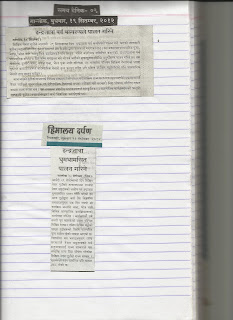












.jpg)


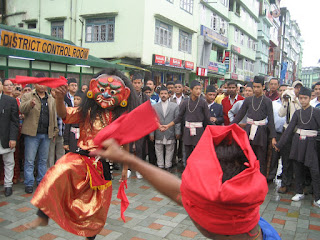.jpg)
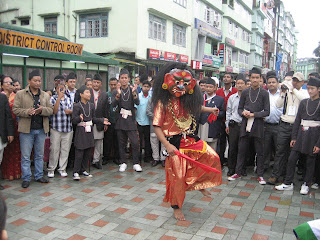.jpg)
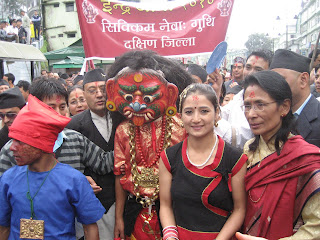.jpg)
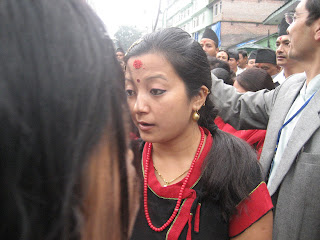.jpg)
